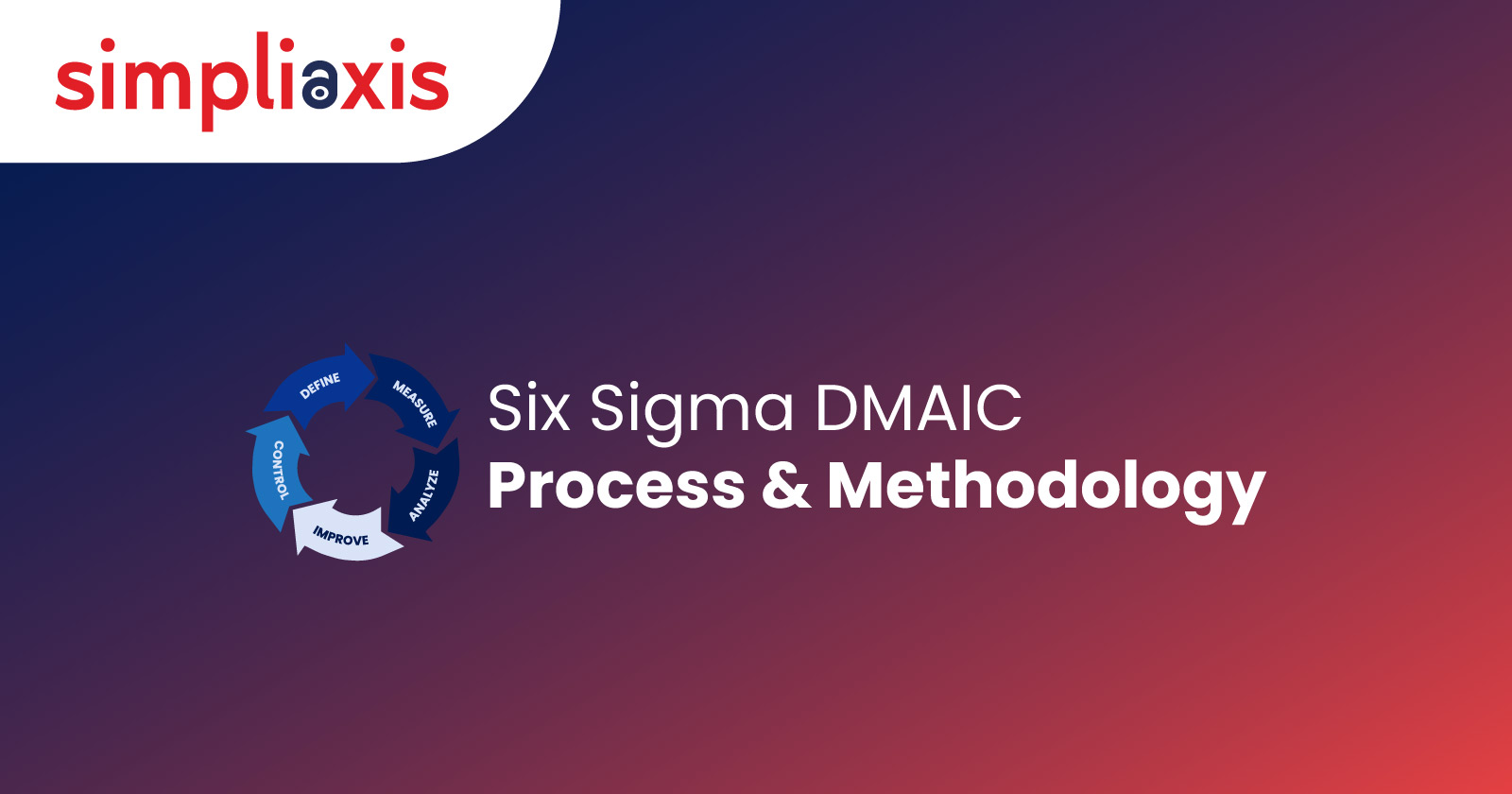DMAIC is the short form of Define, Measure, Analyze, Improve, and Control. It is pronounced as də-MAY-ick. With modern businesses required to combat cut-throat competitive market scenarios, improving sales and profits is becoming challenging like it was never before. There are endless factors that businesses need to deal with to stay competitive and ready for action. In such a contrasting business environment, more and more businesses are now embracing Six Sigma DMAIC, as it enables process improvement, reduces costs, augments profits, and pushes towards optimized business performance.
Today, this blog will cover all aspects of DMAIC – models, process, cycles, methodologies, tools, and benefits.
What is DMAIC?
DMAIC is a five-step strategy that forms the basis of improvement cycles in a Six Sigma project. However, the DMAIC model can be used in stand-alone projects because the purpose is to improve quality.
DMAIC is a data-driven process, and the goal is to find gaps and faults in processes and work progressively towards combatting such issues and developing effective solutions. The end objective of adopting DMAIC is to ensure improvements so that existing processes can be optimized, not only for now but also for later.
Origin
The DMAIC methodology is said to have its base in the PDSA cycle created by Walter A. Shewhart in the 1930s for Bell Laboratories. PDSA means Plan, Do, Study, and Act.
The origin of the present-day model of this five-phased continued improvement methodology is attributed to Toyota Motors. The automobile used this process implementation method to save the lives of children in four American hospitals. The process techniques were later used and evolved further by Motorola Company in the 1980s, though ‘D’ that stands for ‘Define’ was not a part of the original Motorola process improvement cycle. IBM added it later when it went all out and embraced Six Sigma in its production methods. Many companies use ‘Recognize’ at the beginning of the DMAIC process, where it is evaluated if DMAIC can help resolve the issue or not before adopting the DMAIC process.
These are scenarios where the DMAIC model of continuous improvement is possibly applicable.
- There are existing defects and vulnerabilities in the process
- There are chances of minimizing lead times on one hand, and, on the other, there are chances of augmenting productivity and save costs.
- The existing condition is measurable and quantifiable.
DMAIC Process
1. Define
As is evident in this step, the primary goal is to identify the project’s objectives, scope, and deliverables. What is necessary for this phase is for the team to gather information from customers, understand their requirements, and conceptualize their expectations from the project.
This phase is one of the most crucial phases of Six Sigma. Seven steps help project teams in this phase:
- Defining the customer and their need: There are two types of customers, internal and external. The first group is people from the same organization like top management and other departments who will utilize a part of the project team’s output. The latter is the real-time end-users of the product. It is crucial first to understand the exact customer and comprehend their needs and product features required.
- Define the pain points, set the goal, and list the benefits: The next step is to develop the problem statement. Once the pain point has been identified, the team can define the exact goals following the SMART rule – Specific, Measurable, Attainable, Relevant, and Time-bound.
- Form the team and name the champion – In the DMAIC cycle, it is crucial to assign responsibilities and make people accountable. Different roles are assigned. The process owner is the main lead involved with the team direction, plan of action, measure output, and manage the entire project. Process Champion facilitates the Process Owner and works as an obstacle remover.
- Resources: Based on the problem statement and the work scope, resources need to be identified like tools, travel expenses, hiring contractors, etc.
- Getting support from others: The process champion leads from the front in mobilizing organizational support from within the company.
- Making the project plan: Now the action plan needs to be developed. It should be practical and realistic. Beginning from the scope, including latitudinal and longitudinal scoping, the schedule and timeline will be defined.
- High-Level process map creation: Understanding the DMAIC process becomes easy when a process map is drawn. The process map underlines each team member’s role and the relational aspect with the other team members.
2. Measure
This phase is mostly about collecting data and analyzing it to understand if the progress is effective or not. The following steps characterize this DMAIC phase:
- Understanding the key terms: Unit, defect, and opportunity
- Understanding the next key terms: Defects per unit, defects per opportunity, and proportion defective.
- Deciding the data collection strategy: Deciding whether to collect historical data or not; the other challenge is converting the output into numerical values. Hence, the right data collection plan needs to be designed.
- Authenticating measurements: There are typically four parameters that one needs to test during data collection are the outcomes repeatable, reproducible, accurate, and stable.
- Collection procedure of data – In this case, the Black Belt is responsible for overlooking the entire Six Sigma DMAIC process.
3. Analyze
It is the third step in the DMAIC process. It is concerned with understanding the essence and working of current processes and finding the cause of the problems. It is important to dig as much information as possible. It needs to be done properly because it forms the basis of the ‘Improve’ stage. The steps involved are:
- Defining objectives and key performance parameters.
- Next, the need to develop a business process map. Tools that can be used are BPMN or As-Is-Process-Map.
- Identification of root causes: Six Sigma tools recommends are the Pareto Chart, The Fishbone Diagram, and the 5-Whys Analysis.
4.Improve
It is the penultimate step in the Six Sigma DMAIC process. As the name suggests, this is where improvements need to happen. The purpose is to optimize performance. It is also where the use of scientific tools are made.
- Six Sigma advises the use of the DOE approach. DOE stands for Design of Experiments.
- There are controllable and uncontrollable input parameters.
- Few other terms that one needs to be aware of include responses or the output that the customer expects or wants.
- Hypothesis testing helps understand if a hypothesis is precise or not. Alternative and null are two outcomes possible of hypothesis testing.
- The ANOVA table (Analysis of Variance) is done to understand the variance in results expected.
- FEMA, or the Failure Modes and Effects, is a quasi-predictive analysis tool that helps evaluate the business process solutions.
- Undertake pilot studies to test and validate prospective solutions. Black Belts are responsible for the management of the pilot studies.
- Once all the potential improvement solutions are assessed, it is possible to pick the best solution.
5.Control
In this phase, solutions are put into place so that the improvement in processes can be sustained.
Documentation of each step is imperative here. Documenting the steps in the process help in standardizing the steps. Process Stree is an important tool. It is an important step in the quality control plan.
Making the implementation plan: This is the responsibility of the Black Belt. They also need to understand how to integrate the improvised process with the company’s existing processes and workflows. A Response Plan has to be brought into place, too. This is for answering and addressing the ‘what ifs’ that can arise during the implementation process.
Statistical process control or SPC is used for keeping a watch over the process behavior.
Other tools that are used during this DMAIC process are 5S and Mistake Proofing.
Benefits of Six Sigma DMAIC
There are multiple benefits of DMAIC, which is also one of the reasons behind its growing popularity. Some of the benefits:
- It brings in a structured approach to implementing improvements to existing processes.
- It helps create a well-defined roadmap for processes and solutions.
- The entire process follows an analytical process where data is collected on an ongoing basis and consistently evaluated to improve the process.
- DMAIC helps in finding quantifiable ways to find the answer to complicated issues.
- DMAIC can be used as an integrated process or a stand-alone improvement method.
Also, Check:
Conclusion
DMAIC, coincidentally, is not a one-time process. It is a continuing process because defects can arise anytime, and improvements need to be fed on an ongoing basis. There needs to be a continued iterative model. Take every process as a project, and when one is done, you need to move onto the next one. In this way, the Six Sigma goals of the organization can be optimally reached because it helps reach the highest industry standards.
Simpliaxis understands the significance of DMAIC in driving continuous improvement within organizations. Our comprehensive Six Sigma training equips professionals with the knowledge and skills needed to implement DMAIC effectively, ensuring sustainable excellence in process performance. Start your journey towards operational excellence with Simpliaxis today!













 +1-361-998-9988
+1-361-998-9988


